Romanian visual artists Maria Poștea and Bogdan Gărgăriță have turned their passion for painting, illustration and architecture into a business. They publish books in which they “restore” old buildings with special architectural features to look like they did in their golden days. Although they find Romania a difficult country to live in, where artists are not truly appreciated, they have decided to stay so that they can focus on their art and not have to worry about earning their living abroad.
Following an inspiring Erasmus experience abroad during their master’s in 2017, Romanian visual artists Maria Poștea and Bogdan Gărgăriță came up with the idea to open their own publishing house for illustrated books in Bucharest. The couple had no prior experience in managing a business, but they plucked up the courage and dove in, and thus was born the lovingly named “Editura Intaglio”.
Bogdan and Maria both graduated from the Graphic Arts program at the National University of Arts. They later completed their master’s degrees specializing in Metal, and Ambient Textile & Design respectively, which expanded their breadth of practical knowledge and enhanced their artistic point of view.
Over the past five years, they’ve published a variety of beautifully illustrated books for both children and adult readers, including two collector’s volumes dedicated to early 20th century Romanian architecture, which are part of their architectural „Detail” series: “The Neo Romanian Detail: Bucharest” and “Secession Detail: Timișoara”. The books offer a unique take on architectural conservation, featuring buildings from the 1900s that were once principal elements in the urban landscape, but which are now pretty much forgotten.
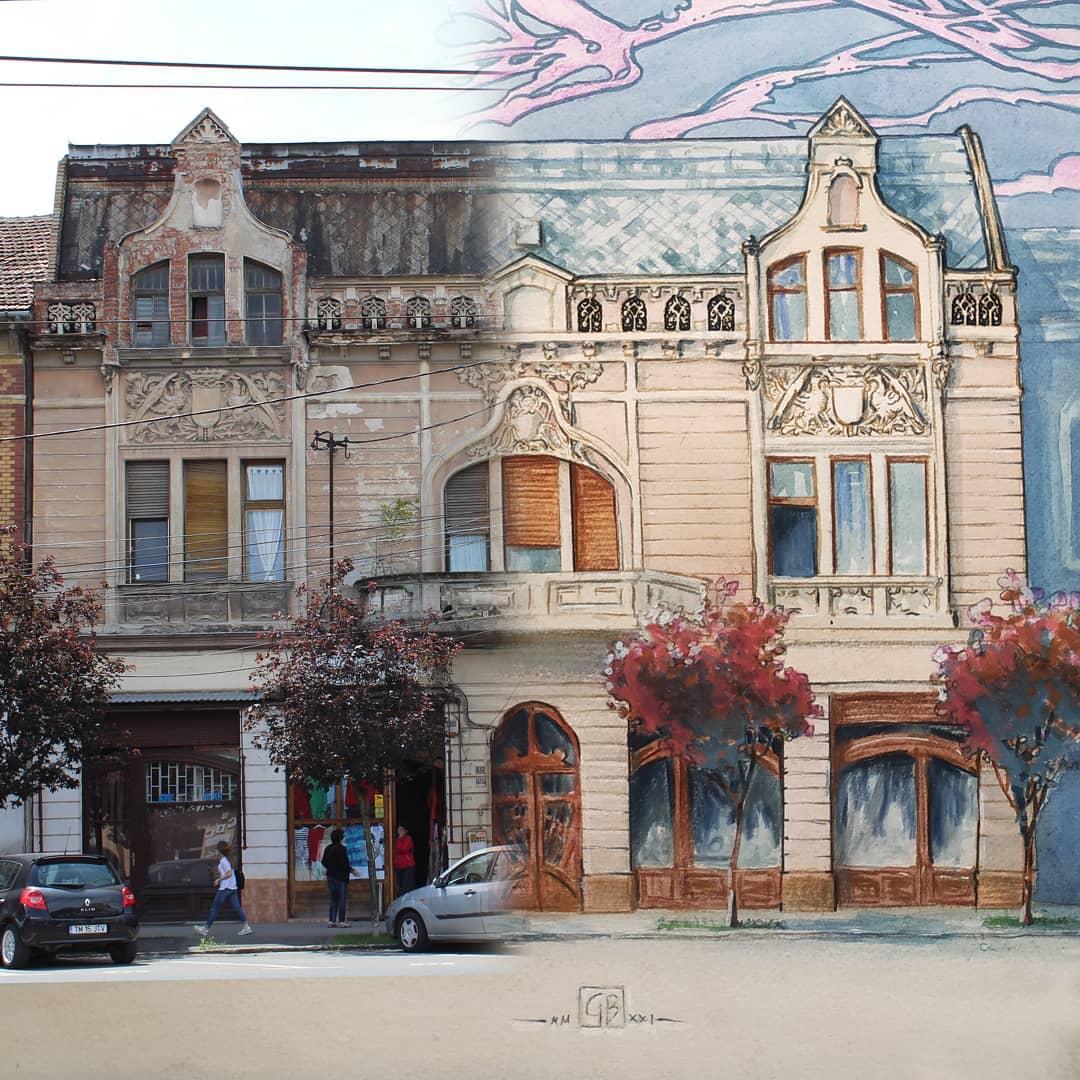
Alongside running the publishing house together, the two of them work on art commissions and teach weekly art classes for children, teens, and adults at their workshop on Negustori Street.
Recently, the couple welcomed me into this very workshop, where we talked about Art Nouveau, passion projects, and what it’s like to open your own business in Romania as an artist.
Maria and Bogdan are both skilled artists and have amassed a portfolio of work that is both plentiful and impressive. Snatches of it are visible here, as the walls of their workshop are covered in vividly painted canvases and highly detailed drawings. They’re beautiful, but I am told they keep their favorites at home.
Tell me about your art. What styles do you work in?
Maria: We’re both influenced by the art movements that appeared around the 1900s, such as Art Nouveau. We’re great admirers of it, and our illustrations and personal pieces often feature re-interpretations of this movement. Our landscapes are worked in an Impressionist manner. We do Plein air painting, and we try to capture the light of a certain hour and the impression of the moment. We both work figuratively but have experimented with several styles and techniques.
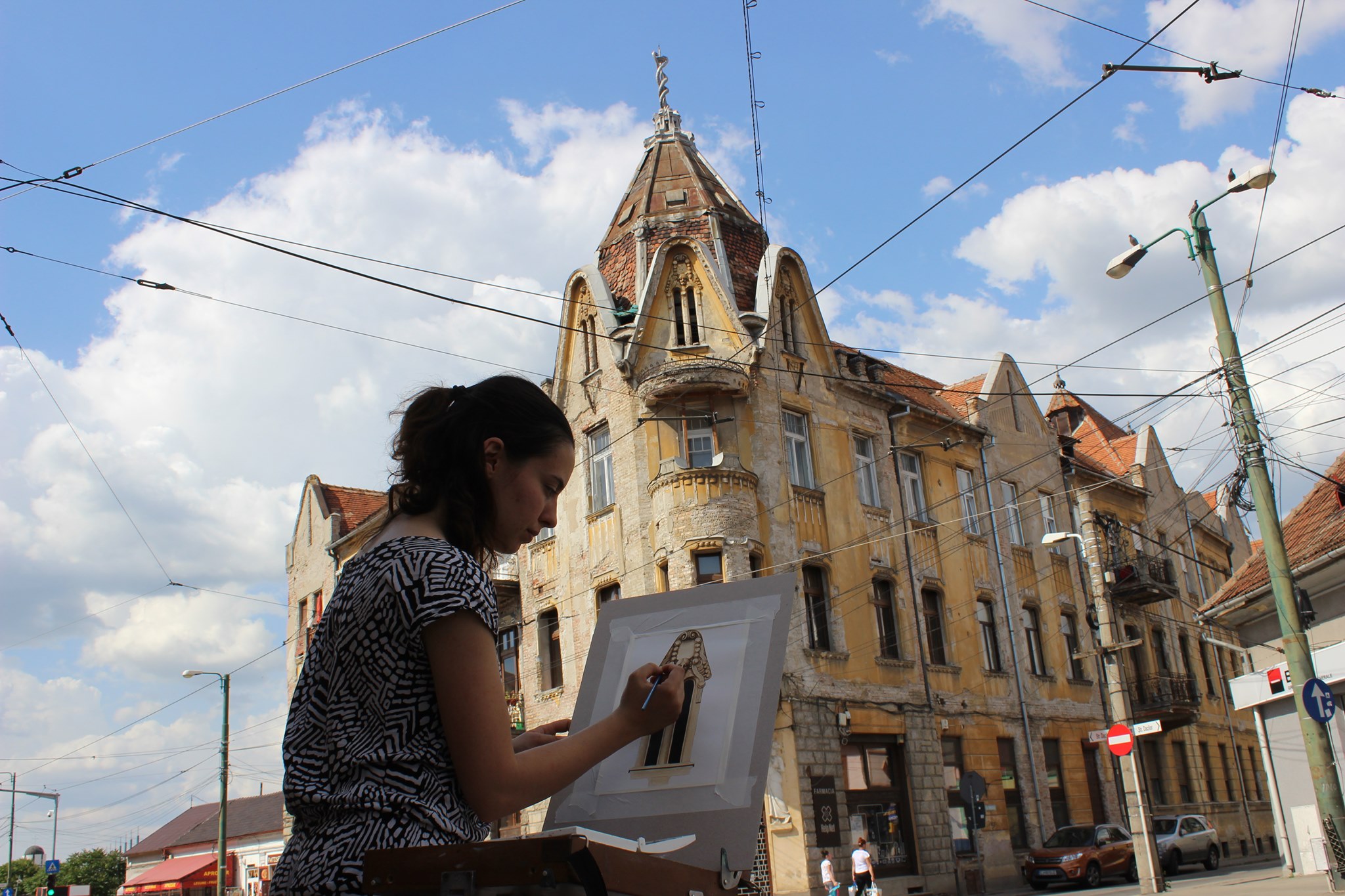
Having worked in various techniques over the years, how did you decide to focus on illustrating and open a publishing house?
Bogdan: The idea came to us in Riga, Latvia, where we studied for a semester during our master’s. We had been doing illustrations for this publishing house in Iași, and there was this guy we were collaborating with there. He told us he was planning on leaving and starting his own publishing house. He suggested we do the same, and we thought sure, why not? We got back to Bucharest in December 2016, and in March 2017 we opened it.
So even though you were studying Metal and Textiles & Design at the time, you were illustrating alongside your studies?
M: Yes, well, while we were in Latvia, we didn’t just do metalwork or textile work. The program was very inclusive, and we were also drawing, painting, printmaking…
B: That’s actually where we first did lithography printmaking. We didn’t have what we needed at school in Romania. Whereas at the university in Riga the materials were available and there were some really skilled teachers, so we learned to print lithographies, and we really went for it. We’d be doing 80 prints in just a few hours.
M: Yeah, we exaggerated a little compared to our classmates. We’d stay on after the end of the class to keep making prints. You know they’re done on the face of a rock, and the design is polished off at the end of the printmaking session so the image is temporary.
B: We wanted to make as many as possible while we could.
It sounds like you did a lot of work while you were there.
M: Absolutely. It was probably the first truly productive period of our lives.
B: We really felt that we were evolving as artists. I remember the first couple of weeks we were there, we were drawing, and we were pretty delighted with what we were creating. Then at the end of our stay, we laid all our drawings side by side to compare them, and we were embarrassed by the first ones we had done. That’s how much we changed in just three months.
M: It was really good for us. I have fond memories of that time. It was a beautiful time in our lives. Riga inspired us in many ways and has remained in our hearts.
B: We definitely want to go back at some point.
Tell me about your publishing house, Intaglio. What does the name stand for?
M: Intaglio is one of the four main types of printmaking, which is done by etching. Our logo represents an etching press, as seen from the side. We both completed graphic design as undergraduates, producing many etchings along the way. In the past, this is how the illustrations in books were duplicated, through various etching techniques. And although we are talking about multiples of the same piece, meaning the resulting works are not unique, etching maintains its collectible nature.
B: That was our goal from the beginning, to create collector’s books.
You have published a selection of niche books that are addressed to adults and are meant to be collector’s items, but you’ve also created several children’s books. What do you like about working for each audience?
B: We both like illustrated children’s books – we regularly buy them for ourselves. And illustrating them is a lot of fun.
M: We started with classic tales such as “Puss in Boots” or “The Town Musicians of Bremen”, but eventually Bogdan started writing his own stories – his newest is “Smaranda the Salamander and the Lakeside Party”.
B: Truthfully, I never thought about writing before this. I feel like laughing at the thought of myself as a writer – but I enjoy it a lot.
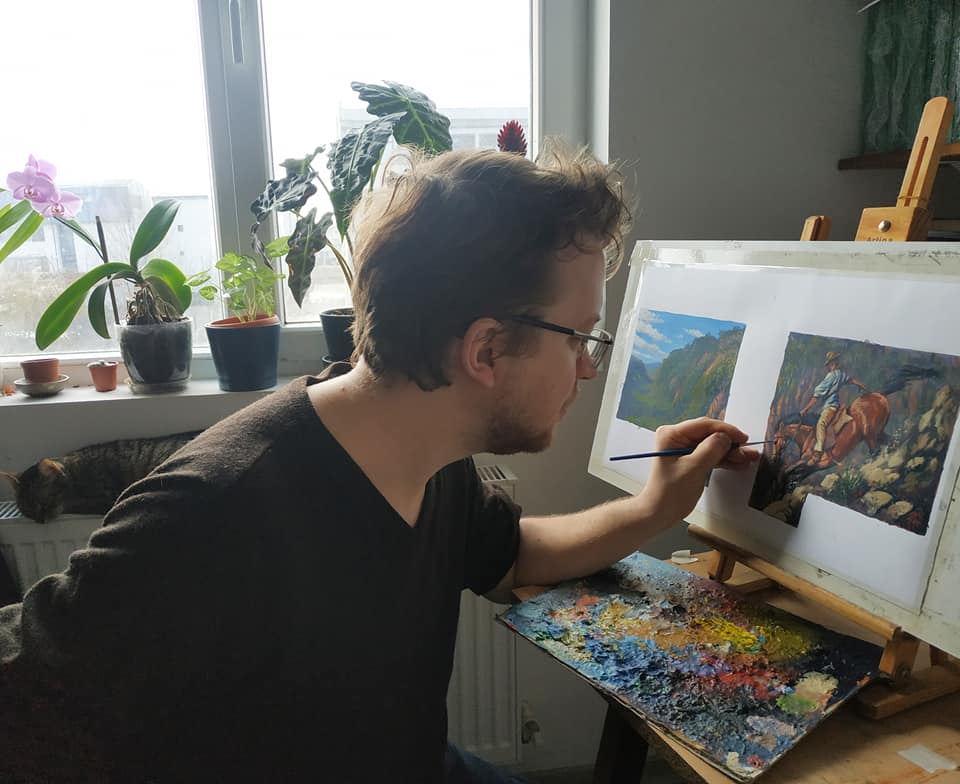
M: As for the books meant for adults, I enjoy the challenge. They’re more difficult and take longer to make, we usually work on them for a year or two. And it’s where we’ve had the opportunity to cover a subject that we find very interesting, through the Detail Series.
How did the Detail Series come about? What was your inspiration?
M: It was Riga.
B: Yes, Riga. We are both passionate about the 1900s movement in art, but before Riga, which is actually the city with the highest concentration of Art Nouveau architecture anywhere in the world, we hadn’t focused on the architecture specifically.
M: The Art Nouveau buildings were so beautiful, the facades were so detailed and ornate, it was overwhelming, and they kind of seeped into our consciousness. When we got back we started paying more attention to the buildings in Bucharest, and we realized that we too have beautifully ornamented buildings from that period.
You hadn’t really been aware of them before.
M: No, we hadn’t. And I think they pass unnoticed by most people.
B: That’s one of our goals with this project actually, to introduce people to lesser-known 1900s architecture. Because I think that people are aware of the Art Nouveau buildings in Paris, or Prague, but they don’t know that there is Art Nouveau architecture in Turkey, Cuba, Norway, or here in Romania. Sure, we’d like to document the Art Nouveau hot spots as well, but our biggest wish is to uncover the generally unknown and underrated architecture.
M: And there’s another reason why this project is so important to us. Once we started really looking at our heritage buildings, we realized how beautiful they truly are, but also what a severe state of disrepair they are in. I think that the work of restoring and preserving them is so important. So what we wanted to do is create a catalog, an inventory if you will, of all these buildings built at the turn of the century. We wanted to immortalize them as they were in their golden days before they are altered beyond recognition or they disappear completely. Some of these buildings… I honestly don’t know how long they have left. To see them now as they are is one thing, in person or in photographs, but it’s difficult to visualize what they actually used to look like, and I think there’s real value in seeing them as they used to be.
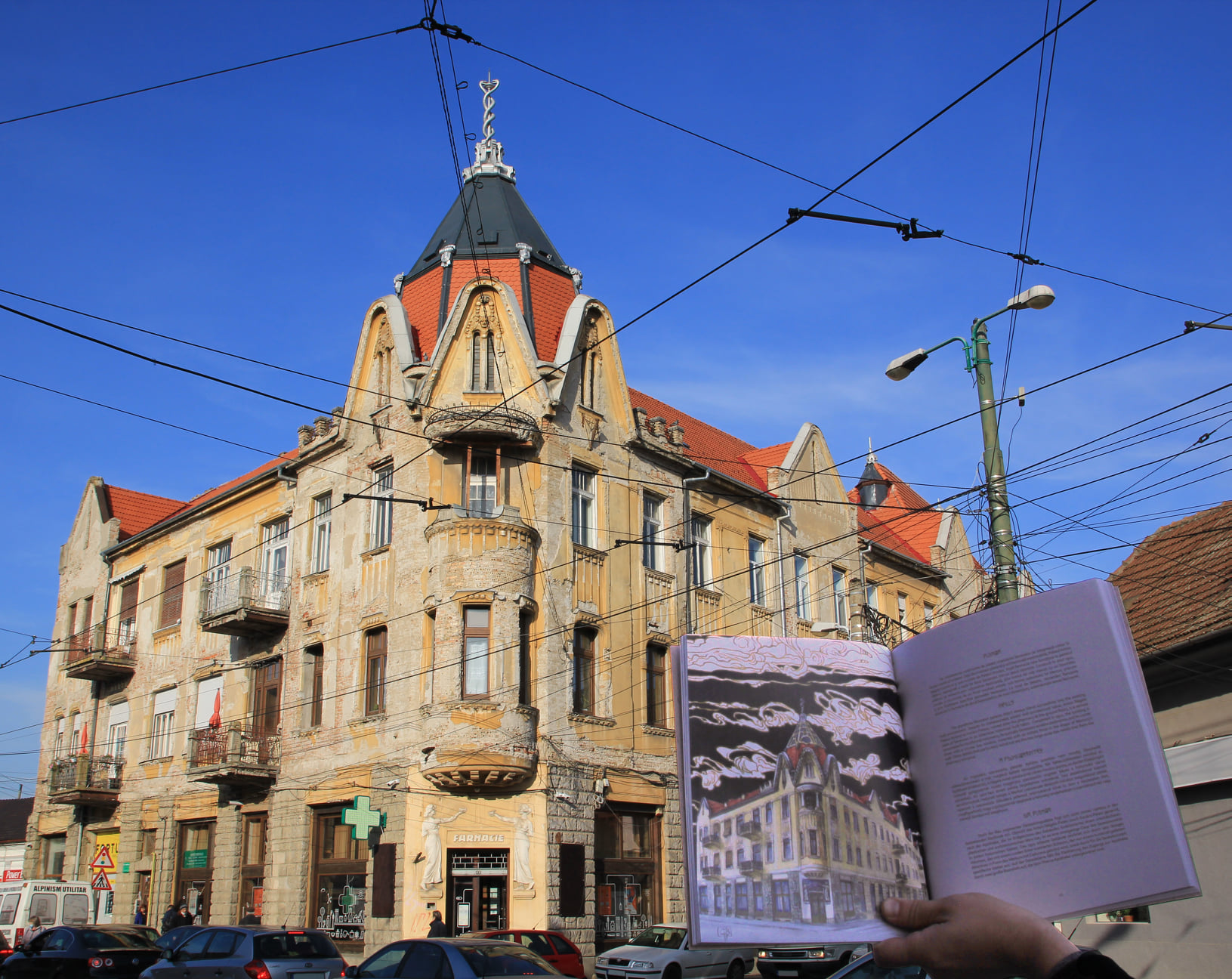
In your books, these buildings appear in their ideal state, brought to life in vivid watercolor. Would a person be able to recognize them on the street?
M: Some of them are in fairly good condition, so yes. And there are street names and numbers in the accompanying texts, so you can find each building around town. Some of them are quite far from their ideal state, however. They’ve been vandalized, covered in graffiti, the masonry is crumbling, and no one has done any repairs. Some of the buildings belong to people who don’t have enough money to pay for proper restoration.
B: Or in some cases, repairs have been made by owners who have the money, but just don’t care about the original structure. Sometimes you’ll see beautiful turn-of-the-century buildings with mismatched fixtures; ornaments that have absolutely nothing to do with the rest of the building. They take down the original ornaments and put up their own, with no regard for the building’s history.
M: We’ve seen cases where the owner has added a horrendous communist-style balcony smack in the middle of the heritage building. The fact is that many of these historical buildings are not officially considered heritage, so they’re not protected by any laws.
How did you go about “collecting” the buildings for the Detail books? What did your work process look like for each book?
M: For “The Neo Romanian Detail: Bucharest” the process of finding and selecting buildings was done very organically: by bicycle.
B: We would wait for a sunny day, choose a neighborhood, grab our bikes, and go zigzagging up and down each street stopping to take pictures of every 1900s-looking building.
M: After we gathered all the photographs, we took them to Oana Marinache, who is an art historian and researcher. She helped us sort through our findings, organized the material into chapters, and wrote the book’s text. For “Secession Detail: Timișoara”, we collaborated with Mihai Moldovan, who is the manager of the Heritage of Timișoara cultural project. With Mihai, the process was a bit different. He suggested many of the buildings and lead us around the city showing us the buildings and teaching us about them.
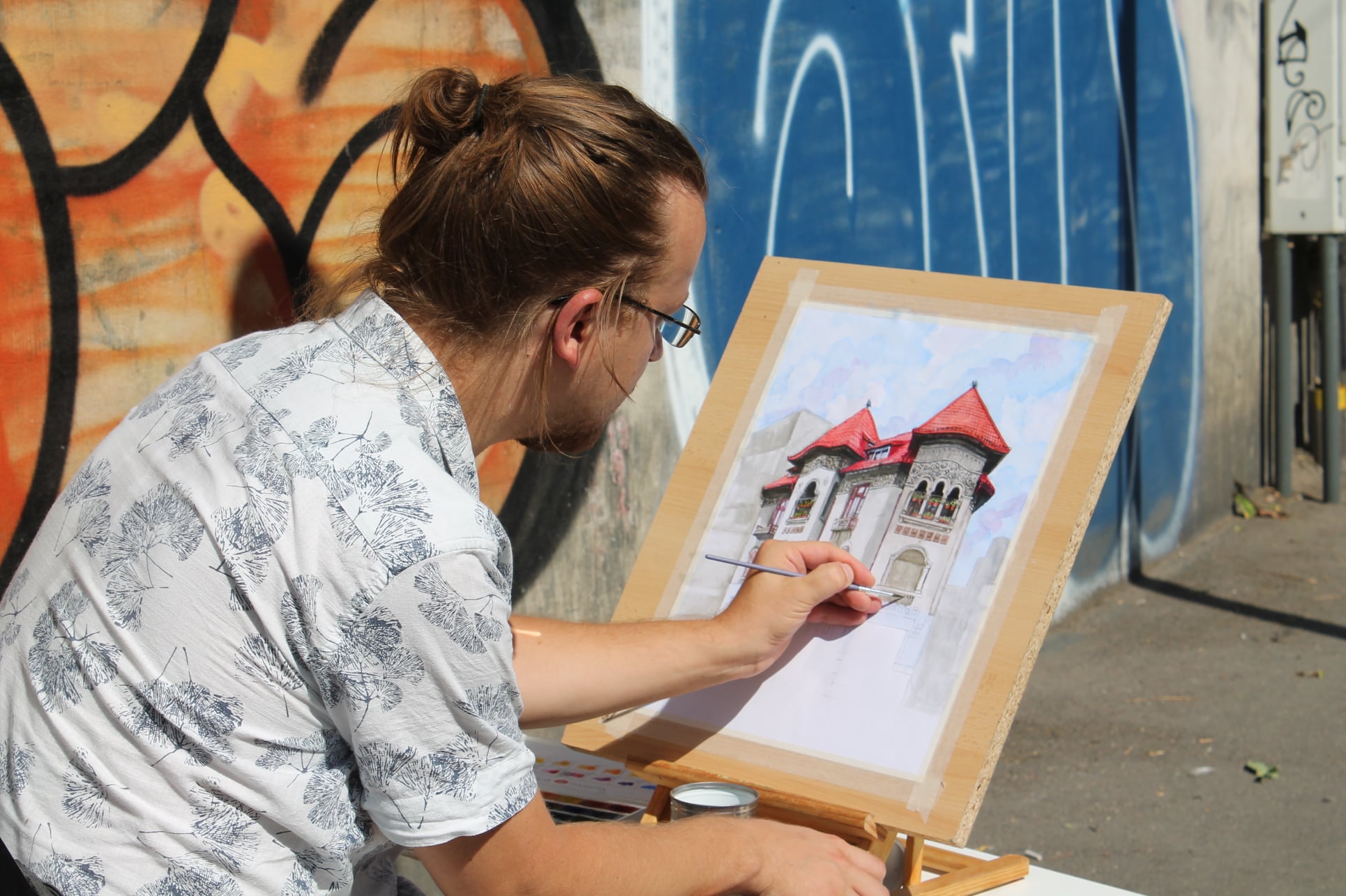
So, your books are an educational experience for your readers, but they’ve also been an education for you.
M: Yes, because of them we’ve been introduced to a world that is totally new to us: we’ve entered Mihai’s community of architects, we’ve been invited to see restoration sites, we’ve spoken to the Romanian Order of Architects. We’ve learned a lot.
You started your own business without any prior experience in business or the world of publishing. What has that been like for you?
M: It’s been interesting. We’re not good with paperwork and stuff like that. And there are so many aspects to taking care of the business, that it can be difficult to stay on top of everything sometimes. But we try to handle the administrative side of things the best we can.
B: We do everything. I mean, Intaglio is Maria and me. Our business is deeply personal because we’re passionate about it, but also because it’s built into our lives. Our office headquarters and main workshop are in our apartment. Maria wakes up and starts doing admin over breakfast. We work with an accountant, and we collaborate with outside people, but we do everything else: the illustrations, yes, but also the book design & layout, the administrative tasks, deliveries, managing our social media, and all things marketing. When our books arrive from the printing press, we’re the ones carrying them upstairs to our house, box by box – so we’re the muscle too.
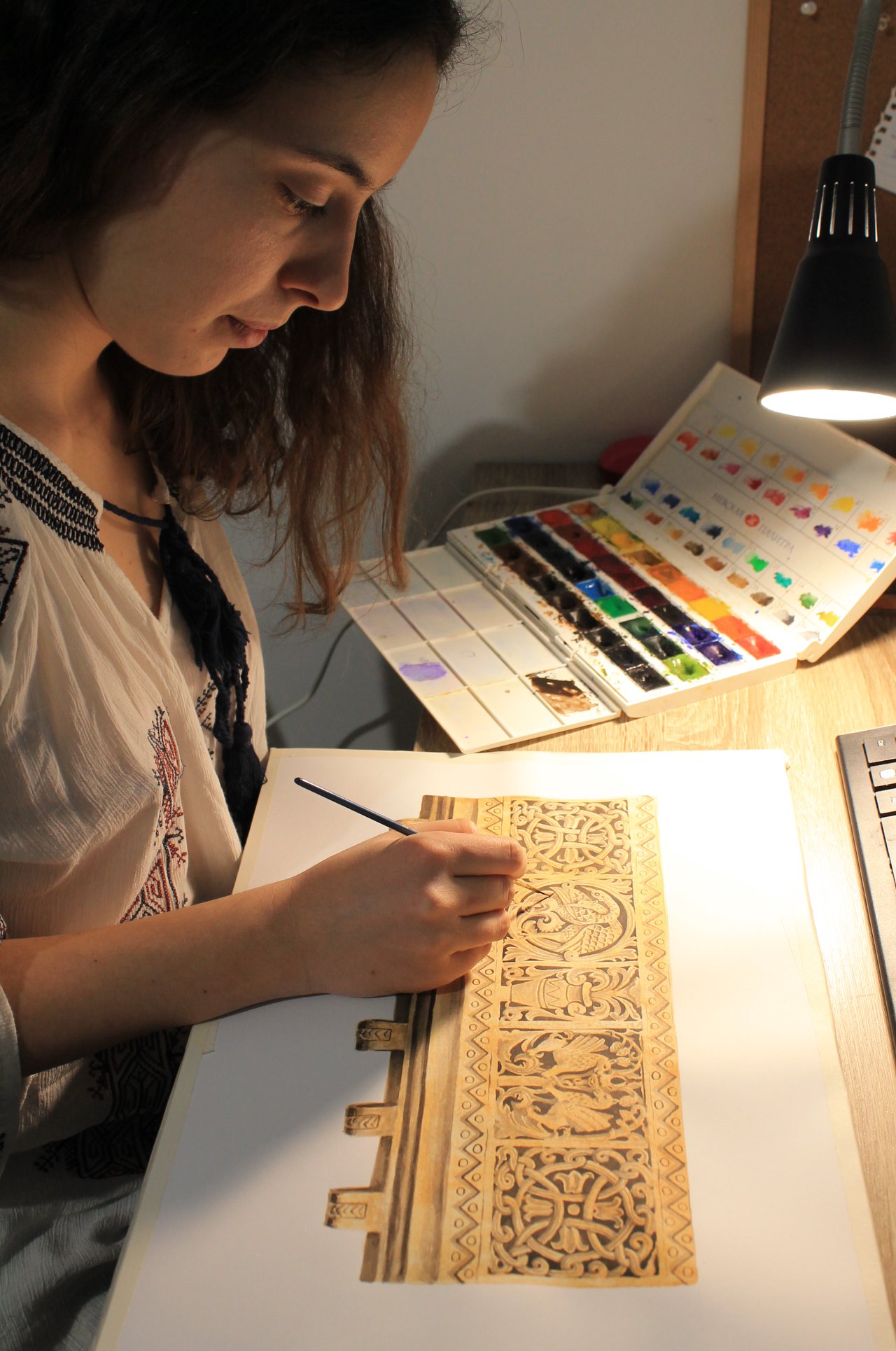
What aspects have you found particularly challenging?
B: I think one of our biggest challenges has been getting to know the ins and outs of publishing itself; learning about typography, page layouts, and dimensions; learning the correct printing terminology. You can’t just create the illustrations and throw them in a book. Everything needs to be carefully thought out, you need to consider things such as How thick is the book’s spine? or How much space needs to be left in the margins so the illustrations aren’t accidentally cut into? We’ve had to learn it all on the go.
M: Through trial and error.
B: And we’re still learning. Every book we create brings its own lessons.
M: Another big challenge has been finding a print house we can work with. We’re a small business and we only need to print 10 to 100 books at a time, but most of them have their minimum amount set at around 500 copies. We can’t afford to print such large quantities.
B: We’ve worked with a few print houses that accept lower quantities, but we’ve encountered various problems. I remember one particular order, it was the biggest we’d made until then. When the order arrived and I took the first book out of its box, the entire inner part fell out, all the pages, and I was left holding the spine. We checked another, and another, and another – same thing. 80% of the books we’d gotten were like that, and we had to send them back. I think it took them several attempts to get them right. It was torturous.
M: We’ve found a print house now, and they’re great, but they’re not in Romania. It would be nice to find someone here at some point.
You’re both Romanian, but you have experience living abroad. How do you feel about building your business here? Is Romania a good country for artists?
M: I think that Romania is a difficult country to live in, in many ways. As artists, I’ve often felt we’d be more appreciated somewhere else. And building a business I’m sure comes with all sorts of hurdles wherever you are, but it seems like there are more than the usual amount here.
Why have you decided to stay here?
M: We’ve stayed here because we’ve built a life here. We have friends, family, a community we belong to, which are very important to us.
B: We love traveling and hope to be able to travel all around the world, but we aren’t really planning on moving somewhere else for good.
M: At least for now.
B: Sometimes I get frustrated with the way things are going here, politically, financially, and ecologically. I sometimes say The Romanian is someone who gasps when they see the sidewalk is level. You know, we’re so used to things going wrong, it’s surprising when they are the way they should be. I feel like it takes a lot of energy to live here, but I haven’t reached that point where I’m like That’s it. Enough. I’m out of here!
M: We hope to see Romania evolve, and are happy whenever we see growth, but we’re not holding our breath. I guess we just try to focus on what we’re doing. And maybe we will end up somewhere else, maybe we’ll stay here. We don’t know yet.
B: I think a benefit of being here is that we can dedicate ourselves to our art. I know people who moved abroad, and they had to work to cover their living expenses, of course, so they ended up getting jobs that had nothing to do with their creative work, and slowly but surely they stopped spending time on their art, they stopped creating. I lived in London for a while, and I had the same problem. I had to work to cover my bills and so I ended up doing all sorts of odd jobs that had nothing to do with visual art. I kept getting orders for pieces back in Romania and I just thought What am I doing here? So, I came back. It’s not ideal here, but as Maria says, we’ve built a life.
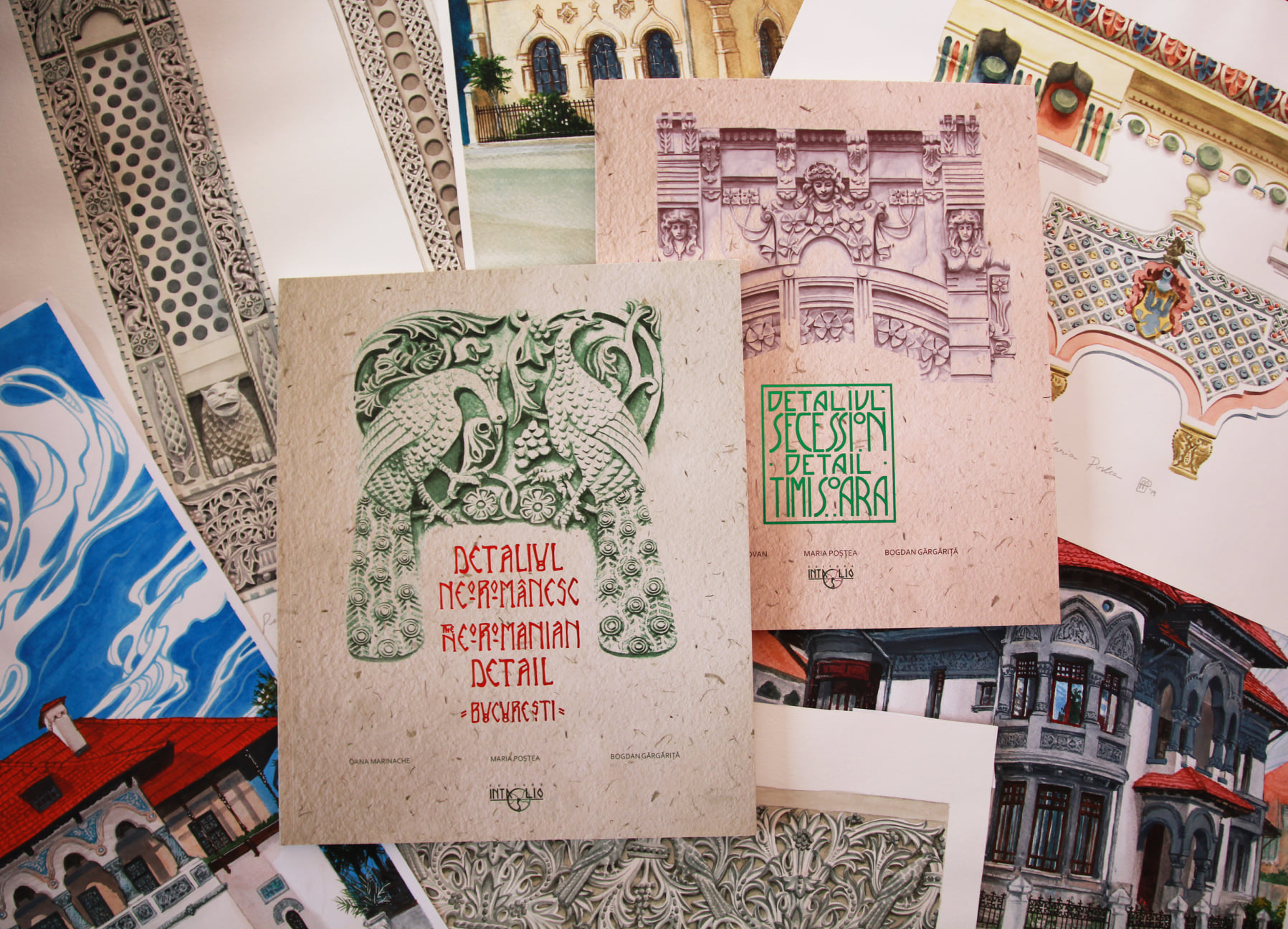
How have you been able to fund Intaglio? Do you have any investors?
B: We started our business with pretty much no money to invest in it. Everything we’ve been able to put in has had to come from our regular earnings: our commissioned work, what we make through teaching. In the beginning, every time we’d do a piece on commission, we’d take that money and channel it into the publishing house. In time we were able to supplement that through crowdfunding, and that gave us the opportunity of publishing more complex books.
How do you use crowdfunding in your projects?
M: We’ll start a project, and when we’re close to finishing it, that’s when we launch the crowdfunding campaign. We do it that way so our backers won’t have to wait long before they get the book they paid for. So far we’ve successfully funded four projects.
B: I think crowdfunding is a great tool for artists. It’s really the only way to get projects off the ground if you don’t have large sums of money to invest in them upfront.
M: Unfortunately, here in Romania, it’s not as common as in other places and I think it’s not well understood. People sometimes seem to think of it as a form of begging, which it’s not at all. You’re asking for money, yes, but you’re providing a product in exchange. I hope this mentality changes.
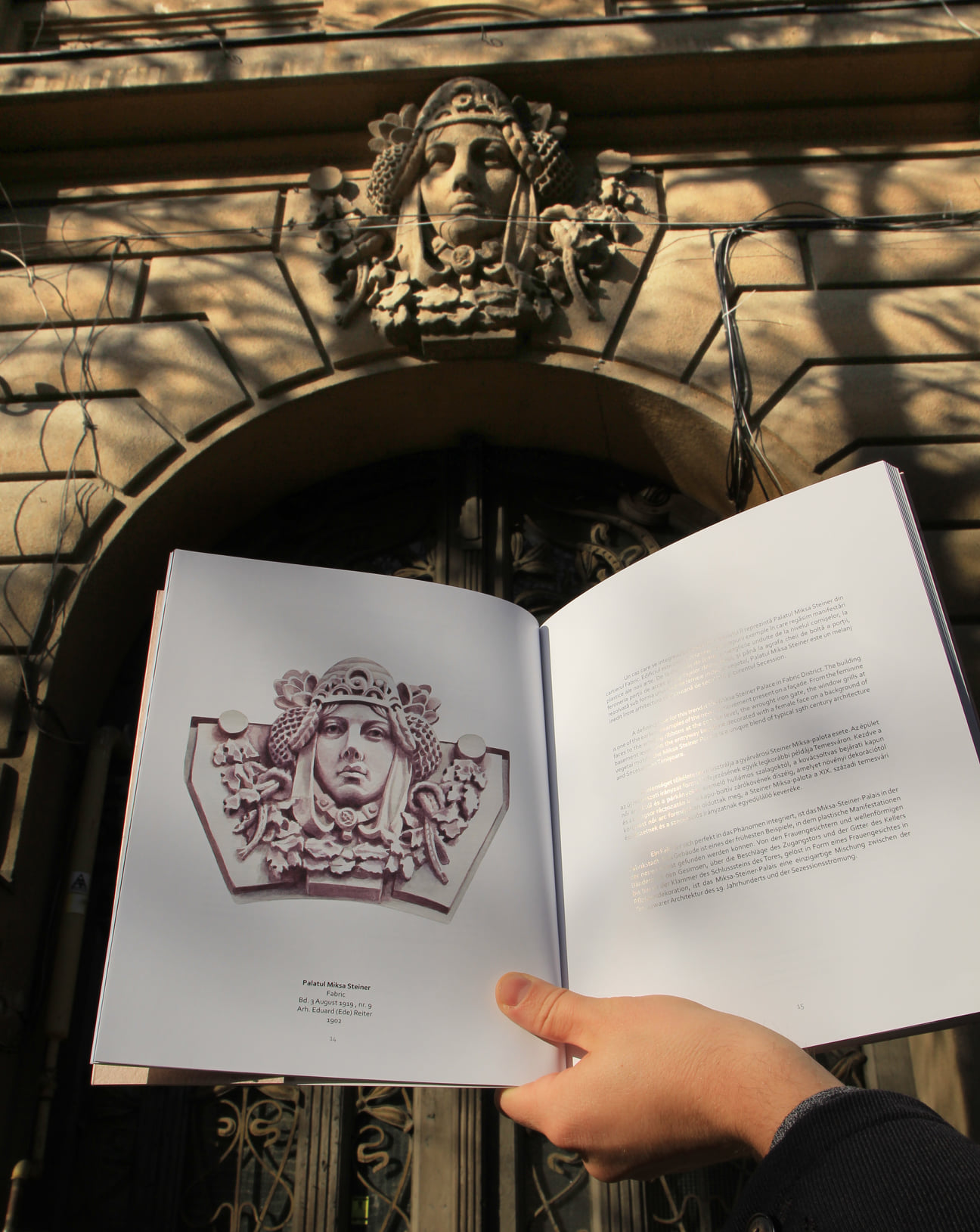
In view of that, I imagine it might be hard to find backers here. Do you use an international crowdfunding platform?
M: We did for part of our first campaign, but it was complicated. Kickstarter isn’t available in Romania and we had to go through someone who lives in a country where it is. We switched to Romanian platforms soon enough: Startarium and Consolid8. The con is that we have access to a much smaller audience through them than we would through an international platform. The pro is that both platforms are run by really nice people. They helped us with each campaign and we’ve had a good experience with both.
As your business grows, what are the next steps you want to take? What plans do you have for the future?
M: On the administrative side of things, it would be nice to add someone to the team. We’d like to find someone to manage our social media and handle marketing. That would free up time which could go into our creative work instead.
B: As for the projects we have planned, I want to do a series of Arthurian legends, which I started with „Tristan and Iseult” and we’re both intent on continuing the Detail series. We’ve already started doing research for the next two books „Secession Detail: Arad” and „Art Nouveau Detail: Bucharest”.
M: We also want to take it to other countries. We’d like to do a book set in Budapest, and one in Riga, for sure.
You seem so busy, I have to ask: when you’re not working on your books, fulfilling orders, or teaching, what are you doing? How do you relax?
M: We paint. (She laughs)
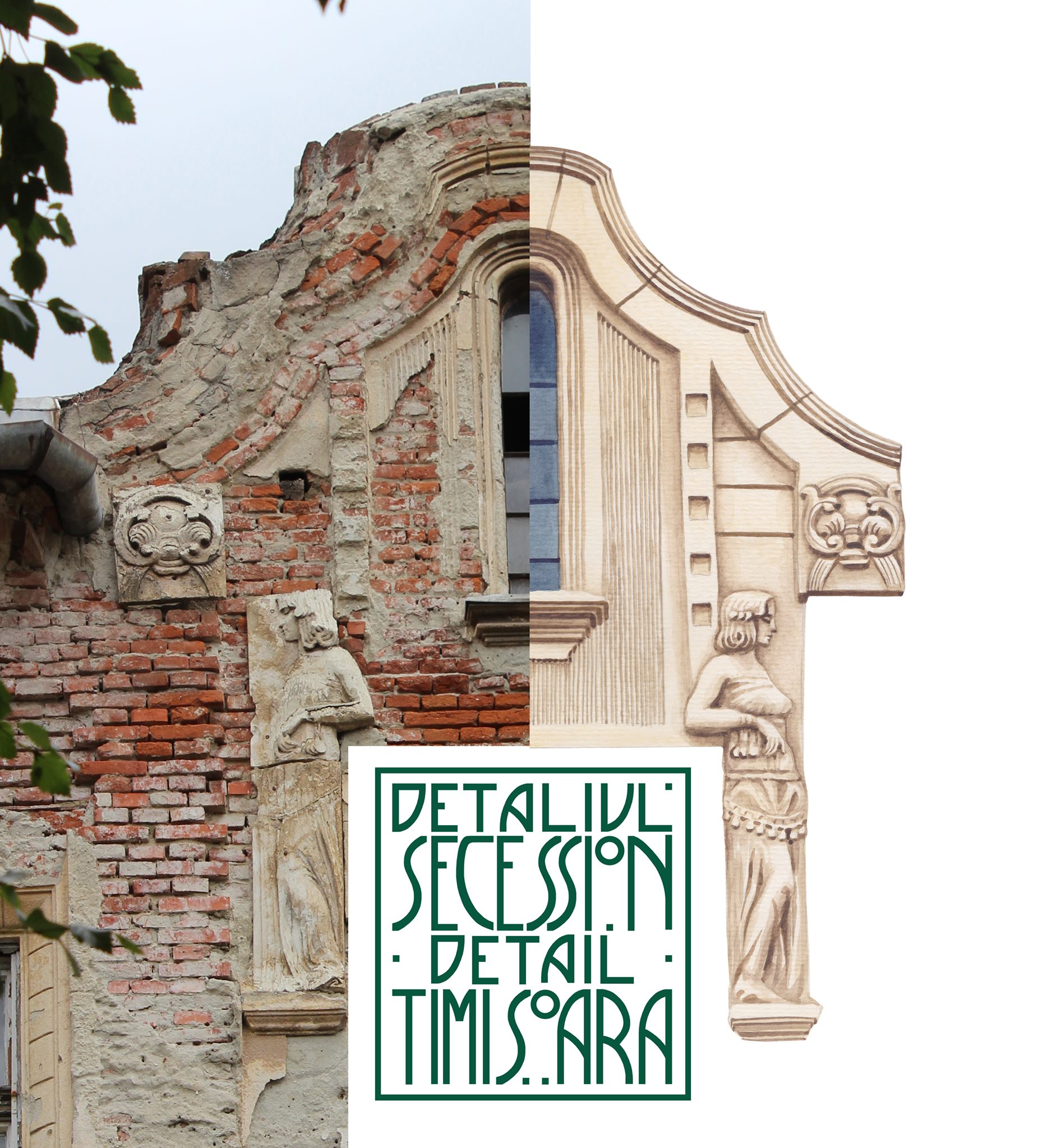
The artwork for the book “Secession Detail: Timișoara” is currently exhibited at the Timișoara Project Center and can be viewed there until June 12. News about the new projects carried out by Editura Intaglio can be found on their website & social media channels.
maia@romania-insider.com
(Photo source: Opening photo by Maia Van Kline, rest of photos courtesy of Maria Poștea and Bogdan Gărgăriță)
